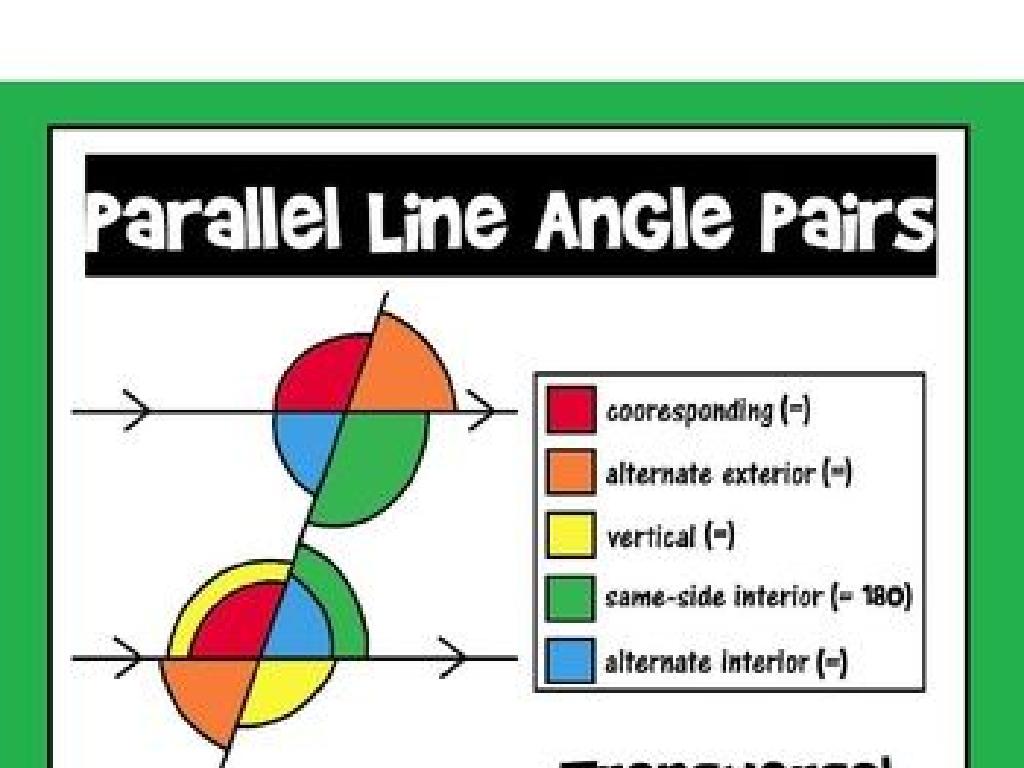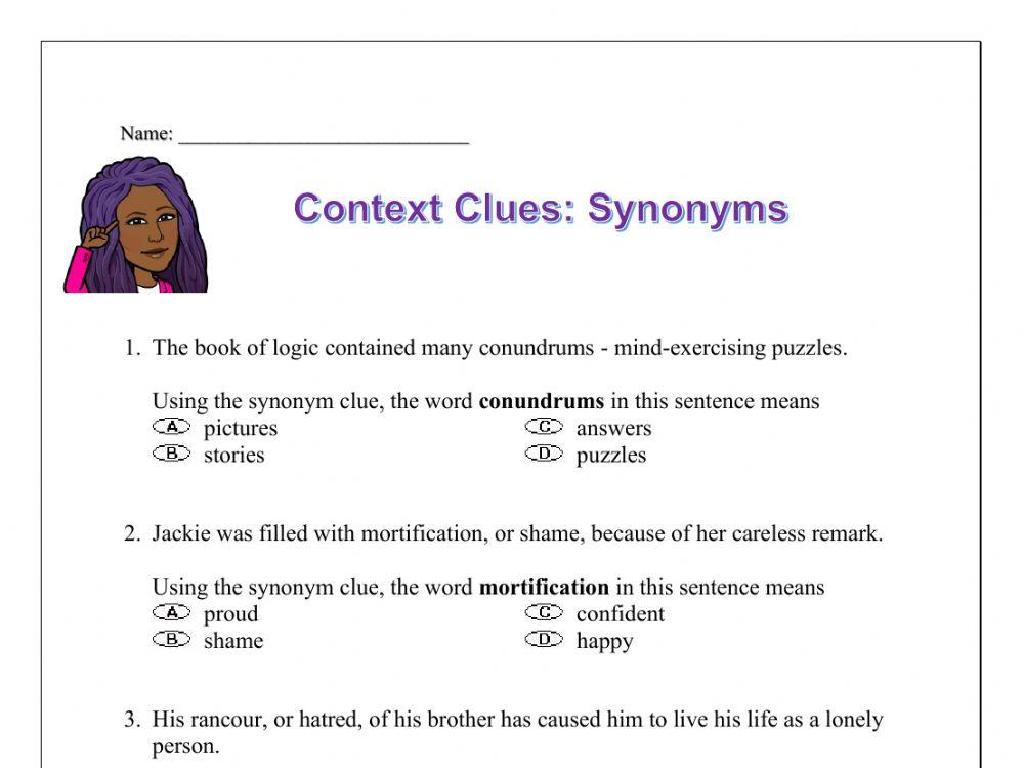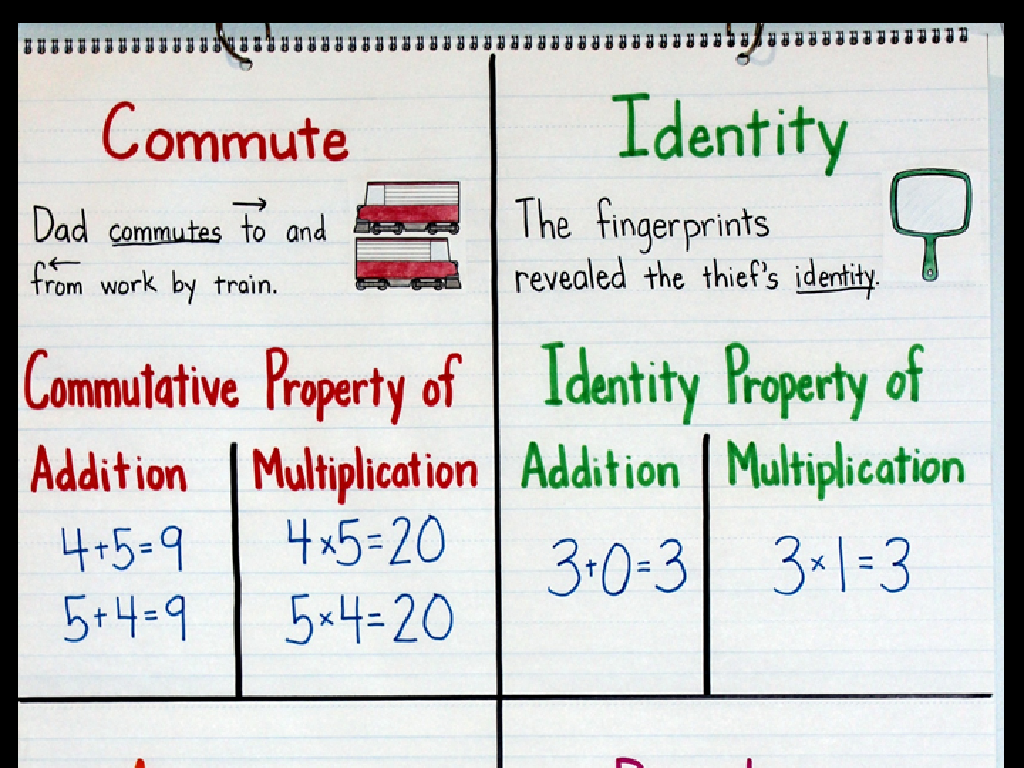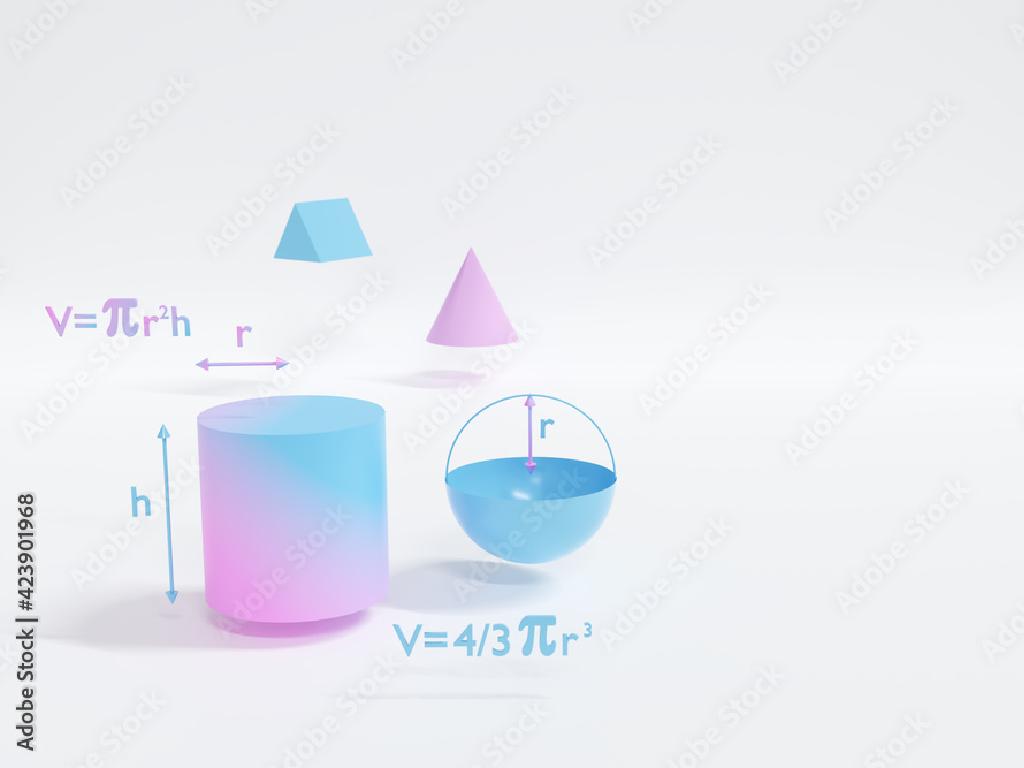Compare Numbers Written In Scientific Notation
Subject: Math
Grade: Eighth grade
Topic: Scientific Notation
Please LOG IN to download the presentation. Access is available to registered users only.
View More Content
Welcome to Scientific Notation!
– Grasping the Power of 10
– Power of 10 simplifies numbers e.g., 10^3 = 1000
– Defining Scientific Notation
– A method to express large or small numbers, e.g., 4.7 x 10^3
– The Purpose of Scientific Notation
– It’s used for convenience with very large or small numbers
– Comparing Numbers in Scientific Notation
– Learn to determine which of two numbers is larger
|
This slide introduces students to the concept of scientific notation, a critical tool in mathematics for dealing with very large or very small numbers. Start by explaining the power of 10 and how it can simplify the representation of numbers. Then, define scientific notation as a way to express numbers as a product of a number between 1 and 10 and a power of 10. Discuss why scientific notation is useful, particularly in science and engineering, to easily handle and compare numbers of different magnitudes. Finally, guide students on how to compare numbers in scientific notation by looking at the exponent and the coefficient. Provide examples and practice problems to reinforce the concept.
Understanding Scientific Notation
– Definition of scientific notation
– A method to express very large or small numbers
– Scientific notation examples
– E.g., 2 x 10^3 for 2000 or 5.97 x 10^24 for Earth’s mass
– Format: a x 10^n
– ‘a’ is the coefficient, ’10^n’ shows the number’s scale
– Constraints on a and n
– ‘a’ ranges from 1 to just under 10, ‘n’ is an integer
|
Scientific notation is a concise way to represent numbers that are extremely large or small. It’s essential for students to understand that the format consists of two parts: a coefficient ‘a’ and a power of ten ’10^n’. The coefficient ‘a’ must be a number between 1 and 10, not including 10, and ‘n’ is an integer that can be positive or negative, depending on whether the number is large or small. Provide examples to illustrate how different numbers are expressed in scientific notation, emphasizing the format and the constraints on ‘a’ and ‘n’. This will help students compare numbers in scientific notation effectively.
Comparing Numbers in Scientific Notation
– Compare with same exponent
– If exponents are equal, compare the coefficients
– Compare with different exponents
– If exponents differ, the number with the higher exponent is larger
– Ordering rules in scientific notation
– Arrange numbers based on exponent value, then coefficient
– Practice with examples
– Use example numbers to apply these rules
|
When comparing numbers in scientific notation, start by looking at the exponents. If the exponents are the same, the coefficients should be compared directly. For different exponents, the number with the larger exponent is greater. To order numbers, first organize them by exponent value, then by coefficient if exponents are equal. Provide students with practice problems to apply these rules, ensuring they understand how to compare and order numbers in scientific notation effectively. This will help them grasp the concept of magnitude and scale, which is crucial in scientific contexts.
Comparing Numbers in Scientific Notation
– Compare with same exponent
– If exponents match, compare coefficients directly, e.g., 3.2×10^5 vs 5.1×10^5
– Adjusting different exponents
– Make exponents the same, then compare, e.g., 2.5×10^3 vs 3.4×10^4
– Practice problem example
– Walk through a practice problem together in class
– Steps for comparison
|
This slide is focused on teaching students how to compare numbers written in scientific notation. Start by explaining that when the exponent is the same, they only need to compare the coefficients to determine which number is larger. For numbers with different exponents, guide them through the process of adjusting one number so both have the same exponent, then compare the coefficients. Work through a practice problem as a class to demonstrate these steps. Encourage students to ask questions and try additional problems for better understanding.
Activity: Rank These Numbers!
– Class activity: Ranking numbers
– List numbers in scientific notation
– e.g., 3.2 x 10^3, 1.5 x 10^4, 2.1 x 10^2
– Determine smallest to largest
– Compare exponents, then coefficients
– Strategies for comparison
– Use place value and exponent rules
|
This class activity is designed to help students practice comparing numbers written in scientific notation. Provide a list of numbers in scientific notation and instruct students to rank them from smallest to largest. Remind them to first compare the exponents to determine the order of magnitude. If exponents are equal, then they should compare the coefficients. Encourage students to use their knowledge of place value and exponent rules to assist in ranking the numbers. Possible variations of the activity could include pairing students to work collaboratively, having a class discussion on different strategies used, or creating a game where students compete to correctly order numbers the fastest.
Class Activity Debrief: Scientific Notation
– Review activity answers together
– Discuss common challenges faced
– For example, confusion in comparing exponents or coefficients
– Explore solutions to challenges
– Share strategies like ordering exponents first
– Open floor for Q&A session
|
This slide is meant to wrap up the class activity on comparing numbers in scientific notation. Start by collectively reviewing the answers to ensure everyone is on the same page. Then, facilitate a discussion about the difficulties students encountered during the activity, such as issues with understanding how to compare different exponents or coefficients. Share strategies to address these challenges, like focusing on the exponents to determine which number is larger or smaller. Finally, open the floor for a Q&A session, allowing students to ask questions and clarify any lingering doubts. This debrief is crucial for solidifying the concepts learned and ensuring students feel confident in comparing numbers in scientific notation.
Scientific Notation in the Real World
– Scientists’ use of notation
– Simplifies handling of huge numbers in experiments and data analysis.
– Notation’s role in technology
– Essential for precision in computations and programming.
– Astronomy and notation
– Used to express distances between celestial bodies like stars and planets.
– Chemistry & engineering examples
– Helps in describing chemical concentrations and engineering tolerances.
|
This slide aims to illustrate the practical applications of scientific notation in various fields. Scientists often deal with extremely large or small numbers, and scientific notation provides a way to work with these numbers more manageably. In technology, scientific notation is crucial for ensuring precision in calculations, especially in computer science and electronics. Astronomy frequently uses scientific notation to articulate vast distances, while in chemistry, it’s used to represent tiny concentrations. Engineering also relies on scientific notation to specify small tolerances in design and manufacturing. Encourage students to think about how simplifying complex numbers into scientific notation can be beneficial in real-world scenarios.
Conclusion & Homework: Scientific Notation
– Recap today’s scientific notation
– Homework: Order numbers in notation
– Compare and arrange a set of numbers written in scientific notation.
– Practice is key to mastery
– Regular practice will solidify your understanding.
– Keep exploring scientific notation
– Try finding real-world examples using scientific notation.
|
As we conclude today’s lesson on comparing numbers in scientific notation, it’s important to reinforce the concepts learned. For homework, students are tasked with ordering a new set of numbers written in scientific notation, which will help them apply today’s lesson practically. Encourage students to practice these skills regularly, as mastery comes with consistent effort. Remind them to look for scientific notation in real life, such as in scientific articles or data on space. This will not only help them understand the relevance of what they’ve learned but also spark their curiosity and engagement with the subject matter.






